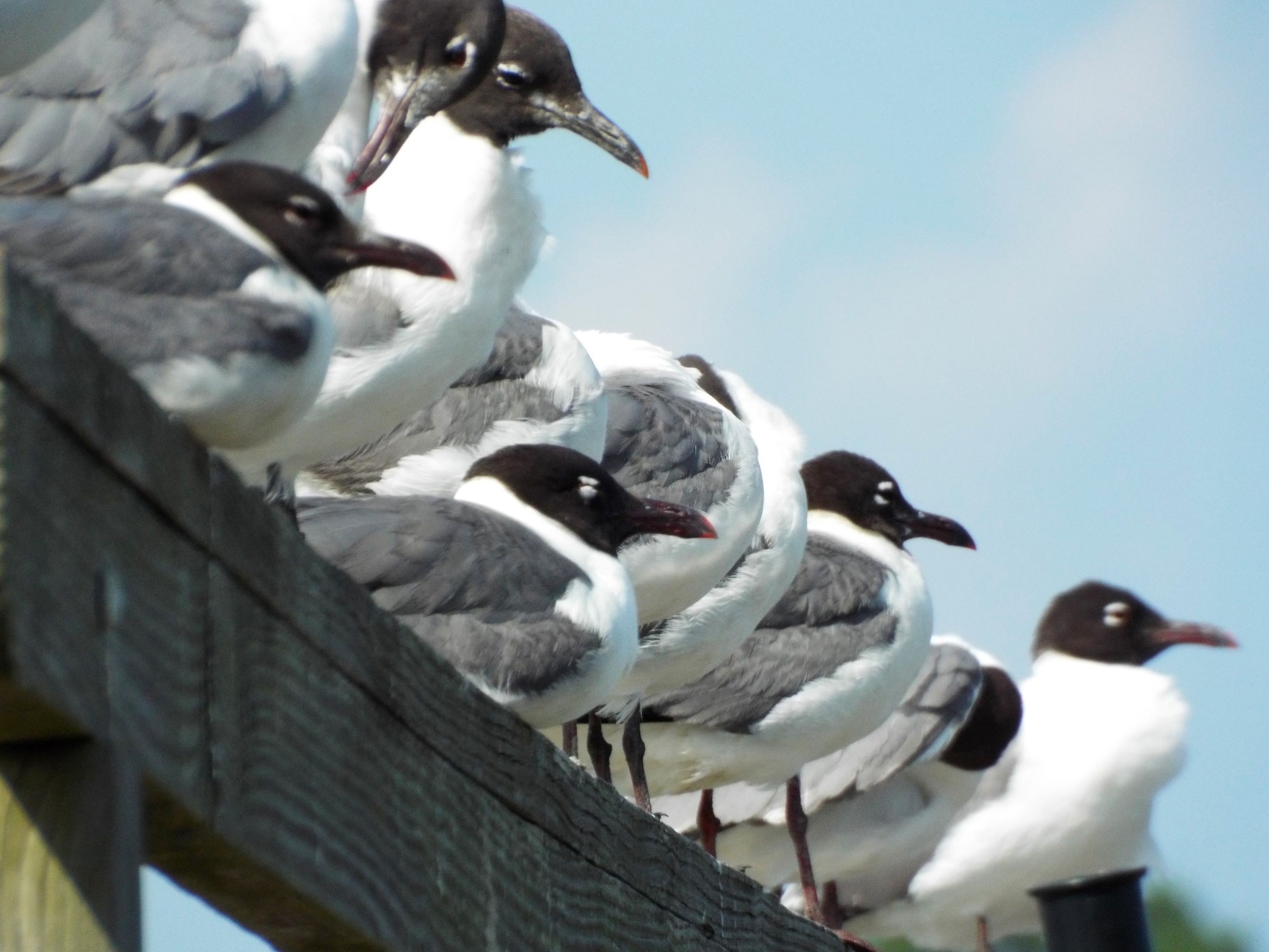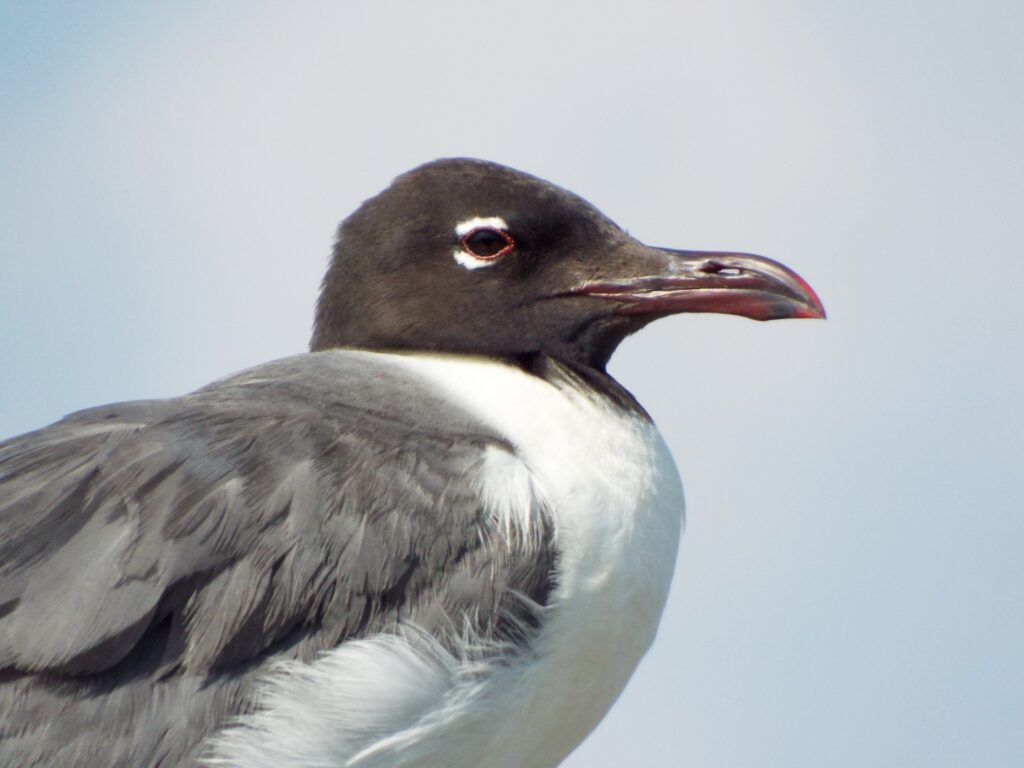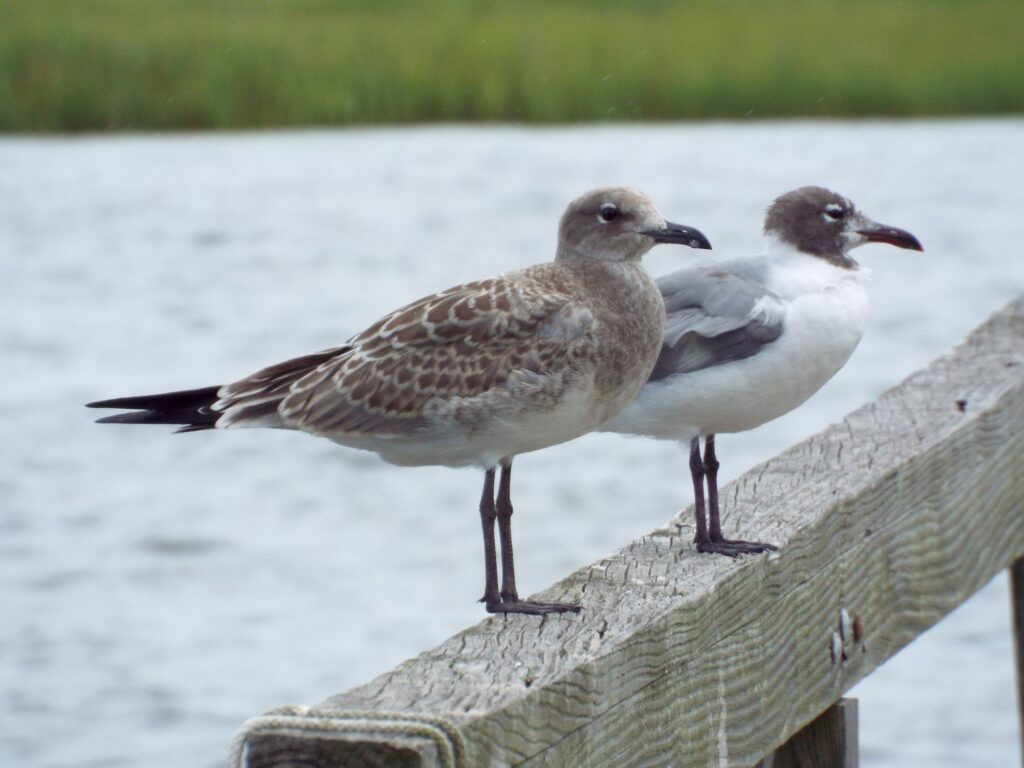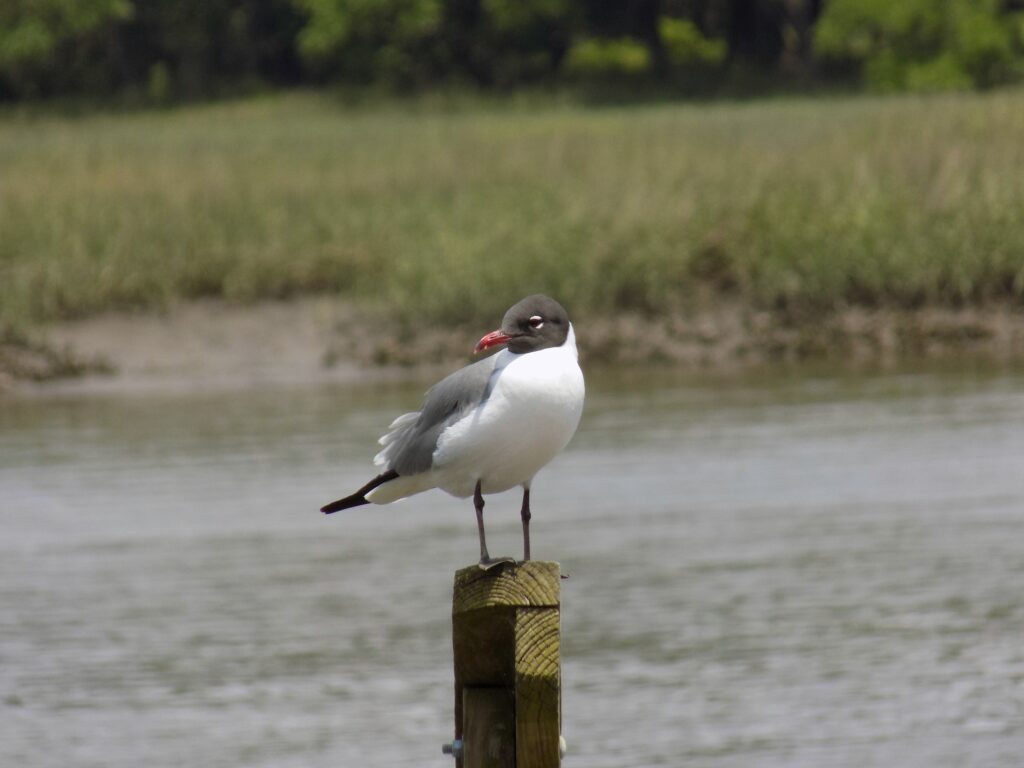




This week for Flora and Fauna Friday, we have the manically cackling seabird, the Laughing Gull (Leucophaeus atricilla).
Gulls are members of the family Laridae. This family includes Terns, Skimmers, Noddies, and Gulls. On Edisto, one species of Gull dominates the inland and coastal habitats. The Laughing Gull is our most common Gull and rules the island in the warmer months. In the winter, some head further south but there is always a presence in number year-round. Laughing Gulls are named for their distinct call, a derisive guffaw that sails through the sea breeze. They’re our second smallest Gull, which aids in identification by size. They’re otherwise easily identified by their dark-red legs and bill, slate gray back, and black-capped head in summer. In winter their plumage changes to faded shades of the same and a mostly white head but otherwise remains distinct.
Laughing Gulls are equally at home in the air, on the water, and on the ground. They typically stay close to tidal systems. Gulls are opportunistic omnivorous seabirds that will eat anything that suits their fancy. They are primarily carnivorous and will hunt fish, crabs, shrimp, shellfish, rodents, insects, and even shorebirds. They’re also scavengers and will eat any carrion that washes up on the beach. Most are also kleptoparasitic, meaning they steal from other animals. Gulls are well renowned for their ability to adapt to human environments and structures, such as marinas, grocery store parking lots, and garbage dumps. That’s thanks mostly to their bold nature and opportunistic diet. This makes them equally at home feeding above a school of fish on the open sea, stealing a Tern’s catch, swallowing wayward hotdogs whole at a ballpark, or picking at kitchen scraps at the municipal dump. This is an important new ecological niche that Gulls and Crows fill. Their adaptability helps fill ecological voids that might otherwise be exploited by more harmful invasive species, such as Black Rats and Feral Pigeons.
Whether we may want to or not, we share our island, our beach, and the handrails of our docks and boats with Laughing Gulls. No matter how tough things get, they’re a group of species that’s here to stay. There’s more to these birds beyond their proficiency at whitewashing decking lumber or swallowing half-eaten hamburgers. We should have an appreciation for their place in our coastal ecosystems and metropolitan landscapes.